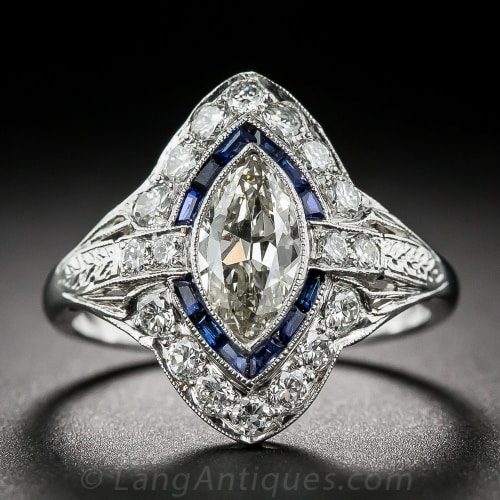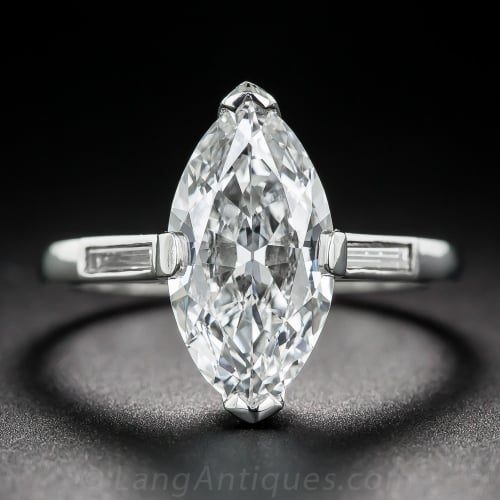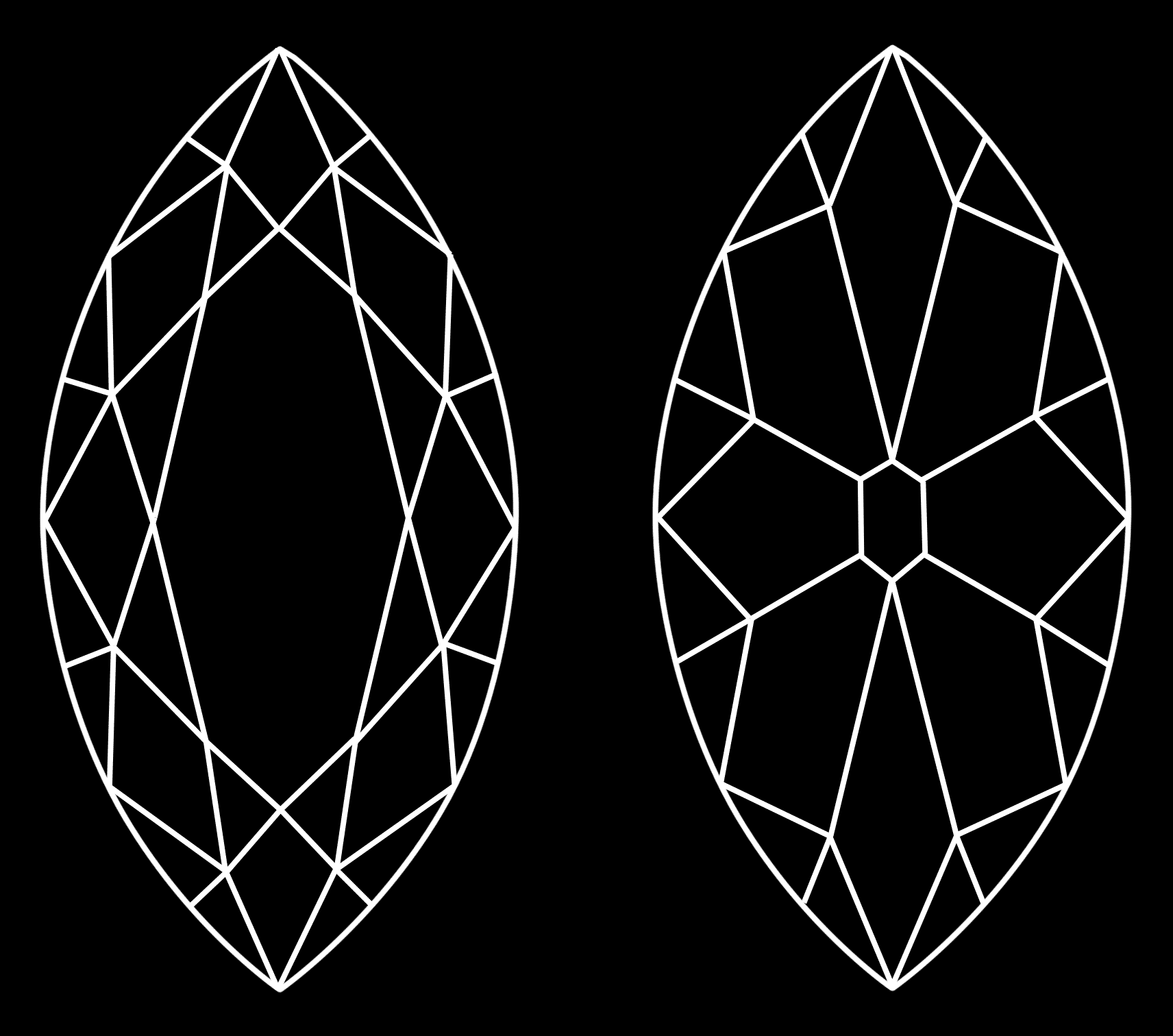The Marquise Cut (a.k.a. the Navette Cut after the Latin ‘navalis’, meaning boat-shaped) can be traced back to Paris around 1745. The cut is a member of the brilliant family and the story goes that it was first commissioned by Louis XV. He would have ordered the cut for a jewel that was to be worn by his mistress: Mme de Pompadour. This lady was given the title of Marquise in 1745 and the cut was named to honor her and popularize her new title.


The cut is a modified brilliant of elliptical shape with pointed ends. Consequently, the cut has undergone the very same evolution as the round brilliant: the older marquise cuts have wider pavilion main facets and lower bezel facets which intersect at approximately one-third of the way towards the culet. The open culet persists into the 1930s when it starts to transition into a closed culet. Keep in mind that exceptions in the form of earlier examples with closed culets do exist; the above describes the general trend, not a hard rule. The diagrams below illustrate these changes:

![Modern Ring with a Marquise Cut Diamond: Note the Now Closed Culet. To the Main Article[edit]](https://www.langantiques.com/university/wp-content/uploads/2017/08/MarquiseCut.gif)